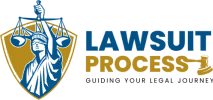The regulatory compliance landscape in the United States is complex and multifaceted, involving numerous federal and state agencies overseeing a wide variety of industries. When businesses fail to comply with regulatory standards, they may face lawsuits initiated by government agencies or private parties. Regulatory compliance lawsuits can be daunting, and the consequences can be severe, ranging from fines and penalties to injunctions and even criminal charges. This article provides an in-depth overview of the regulatory compliance lawsuit process in the United States, including the key stages, types of claims, and potential outcomes.
What is Regulatory Compliance?
Regulatory compliance refers to an organization’s adherence to laws, regulations, guidelines, and specifications relevant to its business operations. Various government agencies, such as the U.S. Securities and Exchange Commission (SEC), Environmental Protection Agency (EPA), Occupational Safety and Health Administration (OSHA), and Food and Drug Administration (FDA), enforce these rules to ensure that businesses operate ethically, safely, and responsibly. These regulations cover everything from environmental standards and workplace safety to financial reporting and product quality.
Failure to comply with these regulations can result in enforcement actions, which often lead to lawsuits. These lawsuits may be civil, administrative, or criminal in nature, depending on the severity of the violation and the regulatory agency involved.
Types of Regulatory Compliance Lawsuits
There are several types of regulatory compliance lawsuits that a business might face. These can include:
Civil Regulatory Lawsuits
Civil regulatory lawsuits are the most common type of enforcement action. These lawsuits are typically filed by government agencies seeking monetary penalties or injunctive relief for violations of regulatory standards. For example, the Environmental Protection Agency may sue a company for violating environmental laws, seeking to impose fines and require corrective actions to bring the company into compliance.
Civil regulatory lawsuits may also be initiated by private parties, such as consumers or competitors, who claim that a company’s non-compliance has caused harm. In such cases, the plaintiff may seek damages for losses resulting from the company’s actions.
Administrative Actions
Administrative actions are proceedings initiated by a regulatory agency without involving the courts. Instead, the agency uses its authority to impose fines, revoke licenses, or order corrective measures. These actions are typically handled within the agency’s internal review system, and businesses may appeal the decision through the administrative process. Administrative actions are common in areas such as financial regulation and health and safety enforcement.
Criminal Regulatory Lawsuits
Criminal regulatory lawsuits are rare but can occur in cases of severe non-compliance or fraud. These lawsuits typically involve violations of laws that carry criminal penalties, such as knowingly submitting false information to regulatory agencies, engaging in fraudulent schemes, or deliberately polluting the environment. Criminal lawsuits may result in significant fines, imprisonment, and long-term damage to the company’s reputation.
Stages of a Regulatory Compliance Lawsuit
The regulatory compliance lawsuit process typically follows a series of stages, from the investigation of potential violations to the resolution of the case. Understanding each stage is critical for businesses to navigate the complexities of regulatory enforcement actions.
1. Investigation
The process often begins with an investigation by a regulatory agency. Investigations may be triggered by routine inspections, complaints from whistleblowers or the public, or red flags identified in a company’s filings or operations. During an investigation, the agency may request documents, conduct interviews, and inspect facilities to gather evidence of potential non-compliance.
In some cases, businesses may be aware of an investigation in progress, while in others, the agency may conduct its inquiry without notifying the company until a later stage. Cooperation with the agency during this phase can help mitigate potential penalties and demonstrate a willingness to rectify any issues.
2. Notice of Violation
If the regulatory agency identifies violations, it may issue a Notice of Violation (NOV) or a similar communication, formally notifying the business of the alleged non-compliance. The NOV typically outlines the specific laws or regulations that the company is accused of violating, along with the evidence supporting the allegations.
Upon receiving an NOV, businesses have an opportunity to respond. This response may involve presenting evidence to refute the allegations, demonstrating corrective actions taken to address the violations, or negotiating with the agency to resolve the matter without litigation.
3. Administrative Hearing or Civil Action
If the issue is not resolved through negotiation or corrective actions, the regulatory agency may proceed to an administrative hearing or file a civil lawsuit in court. In an administrative hearing, the agency’s internal adjudicators or an administrative law judge (ALJ) will review the case and make a determination. The outcome may include fines, penalties, or orders for the company to take corrective actions.
If the case proceeds to civil court, the process is more formal, involving discovery, motions, and potentially a trial. During discovery, both parties exchange information and evidence relevant to the case. The plaintiff (either the regulatory agency or a private party) must prove that the business violated the applicable regulations, and the defendant (the business) has the opportunity to present a defense.
4. Settlement Negotiations
Throughout the lawsuit process, there may be opportunities for settlement negotiations. Settlements are often preferable for both parties, as they can avoid the costs and uncertainty of a trial. Settlements may involve the business agreeing to pay fines, implement corrective measures, and sometimes admit to certain violations without admitting liability.
Many regulatory compliance lawsuits are resolved through settlements before reaching the trial stage. However, the terms of the settlement can vary widely, depending on the severity of the violations and the regulatory agency involved.
5. Trial
If a settlement cannot be reached, the case may proceed to trial. In a civil regulatory lawsuit, the trial process involves both sides presenting evidence and arguments before a judge or jury. The judge or jury will then decide whether the company violated the applicable regulations and, if so, what penalties should be imposed.
The trial process can be lengthy and costly, with both sides incurring significant legal fees. The outcome of the trial can result in fines, injunctions, or other penalties imposed on the business.
6. Appeals
After a judgment is issued, either party may appeal the decision to a higher court. The appeals process allows for a review of the trial’s proceedings to determine if any legal errors were made that could affect the outcome. Appeals can further prolong the regulatory compliance lawsuit process, often taking months or years to resolve.
Key Considerations for Businesses
Businesses facing regulatory compliance lawsuits must be prepared for a complex and potentially lengthy process. There are several key considerations that companies should keep in mind to minimize the impact of such lawsuits:
Compliance Programs
One of the most effective ways to avoid regulatory compliance lawsuits is to implement robust compliance programs. These programs should include regular internal audits, employee training, and clear policies for reporting and addressing potential violations. A well-structured compliance program can not only help prevent violations but also demonstrate to regulatory agencies that the company is committed to adhering to legal standards.
Legal Representation
Given the complexity of regulatory compliance lawsuits, businesses should seek legal representation from attorneys with expertise in the relevant regulatory area. Experienced counsel can provide guidance throughout the investigation, negotiation, and litigation process, helping businesses navigate the intricacies of regulatory law.
Cooperation with Regulatory Agencies
Cooperating with regulatory agencies during investigations can often lead to more favorable outcomes. Voluntarily providing information, implementing corrective measures, and demonstrating a commitment to compliance can help reduce the severity of penalties or lead to negotiated settlements that avoid litigation altogether.
Litigation Risk
In some cases, businesses may choose to challenge regulatory compliance actions in court. However, litigation carries risks, including the possibility of significant legal fees, reputational damage, and adverse judgments. Before deciding to proceed with litigation, businesses should carefully assess the likelihood of success and the potential consequences of a negative outcome.
Conclusion
The regulatory compliance lawsuit process in the United States is a complex and multifaceted procedure that requires careful navigation by businesses facing allegations of non-compliance. By understanding the various types of lawsuits, the stages of the process, and the key considerations for minimizing risk, businesses can better prepare for and respond to regulatory enforcement actions. A proactive approach to compliance, combined with skilled legal representation, can help mitigate the impact of lawsuits and ensure that businesses remain in good standing with regulatory agencies.
As regulations continue to evolve and government oversight increases, businesses must remain vigilant in their compliance efforts to avoid the costly and potentially damaging consequences of regulatory compliance lawsuits.






